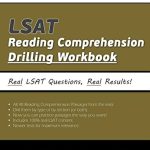Maximize Performance With Our Comprehensive Training Test And Validation Split – Click For Optimal Results!
Training Test and Validation Split
Introduction
Welcome, Readers! Today we are going to delve into the concept of training test and validation split, a crucial technique used in machine learning and data analysis. This article aims to provide a comprehensive understanding of this process, its importance, and how it can enhance the performance of models in various applications. By the end of this article, you will have a clear grasp of training test and validation split and how it can optimize your data analysis.
2 Picture Gallery: Maximize Performance With Our Comprehensive Training Test And Validation Split – Click For Optimal Results!
![Picture of: Train Test Validation Split: How To & Best Practices []](https://psctest.info/wp-content/uploads/2023/09/train-test-validation-split-how-to-amp-best-practices_13.png)
![Picture of: Train Test Validation Split: How To & Best Practices []](https://psctest.info/wp-content/uploads/2023/09/train-test-validation-split-how-to-amp-best-practices_14.png)
Training test and validation split is a method used to assess the performance of machine learning models and evaluate their accuracy. It involves dividing a dataset into three distinct subsets: the training set, the test set, and the validation set. Each subset serves a specific purpose and plays a vital role in the model’s development and evaluation.
Now, let’s explore the details of each subset and understand their significance in the training test and validation split process.
Training Set
![training test and validation split - Train Test Validation Split: How To & Best Practices [] training test and validation split - Train Test Validation Split: How To & Best Practices []](https://psctest.info/wp-content/uploads/2023/09/train-test-validation-split-how-to-amp-best-practices_13.png)
Image Source: website-files.com
📝 The training set is the largest subset of the data and is used to train the machine learning model. It contains labeled examples that the model learns from, enabling it to identify patterns and make accurate predictions. The training set is crucial in building a robust and effective model.
📝 The training set is further divided into input features (independent variables) and output labels (dependent variable). The model is trained to map the input features to the output labels, allowing it to predict the labels for new, unseen data.
📝 To ensure the model generalizes well, it is essential to have a diverse and representative training set. This means including a wide range of examples that cover different scenarios and patterns present in the dataset.
Test Set
📝 The test set is used to evaluate the performance of the trained model. It serves as an unbiased measure of the model’s accuracy, as it contains examples that the model has not seen during the training phase.
![training test and validation split - Train Test Validation Split: How To & Best Practices [] training test and validation split - Train Test Validation Split: How To & Best Practices []](https://psctest.info/wp-content/uploads/2023/09/train-test-validation-split-how-to-amp-best-practices_14.png)
Image Source: website-files.com
📝 The test set helps identify any issues with overfitting or underfitting. Overfitting occurs when the model performs well on the training data but fails to generalize to new data. Underfitting, on the other hand, happens when the model fails to capture the underlying patterns in the data.
📝 It is crucial to keep the test set separate from the training set during the model development process to ensure an unbiased evaluation of the model’s performance.
Validation Set
📝 The validation set is used to fine-tune the model and optimize its hyperparameters. Hyperparameters are adjustable parameters that impact the model’s performance and behavior, such as learning rate, regularization strength, or the number of hidden layers in a neural network.
📝 By evaluating the model’s performance on the validation set, adjustments can be made to the hyperparameters to improve the model’s accuracy and prevent issues like overfitting or underfitting. The validation set acts as a simulation of real-world data, providing insights into how the model would perform in actual scenarios.
📝 It is important to note that the validation set should not be used to make decisions about the model’s architecture or hyperparameters. Instead, it serves as a tool for fine-tuning and selecting the best-performing model.
What is Training Test and Validation Split?
📝 Training test and validation split is a technique used to divide a dataset into three subsets: the training set, the test set, and the validation set. This division allows for effective model development, evaluation, and optimization.
📝 The training set is used to train the machine learning model, enabling it to learn from labeled examples and identify patterns in the data. The test set is used to evaluate the model’s performance on unseen data, while the validation set helps fine-tune the model’s hyperparameters.
📝 Training test and validation split is crucial to ensure the model’s accuracy and prevent issues like overfitting or underfitting. By separating the data into distinct subsets, a more robust and reliable model can be built.
Who Can Benefit from Training Test and Validation Split?
📝 Training test and validation split is beneficial for anyone involved in machine learning or data analysis. Researchers, data scientists, and analysts rely on this technique to develop accurate models that can make reliable predictions.
📝 Data-driven industries, such as finance, healthcare, and marketing, can greatly benefit from training test and validation split. By ensuring the accuracy of their models, these industries can make informed decisions and optimize their processes.
📝 Students and enthusiasts interested in machine learning can also benefit from understanding training test and validation split. It provides a solid foundation for building reliable models and enables them to explore various applications of machine learning.
When Should Training Test and Validation Split be Implemented?
📝 Training test and validation split should be implemented at the early stages of model development. It is crucial to divide the dataset before training the model to ensure an unbiased evaluation of its performance.
📝 When working with limited data, it becomes even more important to employ training test and validation split. By carefully partitioning the dataset, researchers can make the most of the available data and build accurate models.
Where Can Training Test and Validation Split be Applied?
📝 Training test and validation split can be applied in various domains where machine learning is used. This includes areas such as image recognition, natural language processing, recommendation systems, and predictive analytics.
📝 In the field of healthcare, training test and validation split can be employed to develop models that can predict diseases, analyze medical images, or personalize treatments based on patient data.
📝 E-commerce companies can utilize training test and validation split to build recommendation systems that suggest relevant products to customers based on their browsing history and preferences.
Why is Training Test and Validation Split Important?
📝 Training test and validation split is important because it ensures the accuracy and reliability of machine learning models. By separating the data into subsets, researchers can evaluate the model’s performance on unseen data and make improvements accordingly.
📝 Overfitting and underfitting are common issues in machine learning. Training test and validation split helps identify these problems early on, allowing researchers to fine-tune the model and prevent inaccurate predictions.
📝 The use of training test and validation split also improves the generalization ability of the model, ensuring that it can perform well on new, unseen data.
How to Implement Training Test and Validation Split?
📝 To implement training test and validation split, follow these steps:
Divide your dataset into the training, test, and validation sets, ensuring that each subset is representative of the overall data.
Assign a suitable proportion of data to each subset. Common ratios include 70% for training, 15% for testing, and 15% for validation, but this can vary based on the specific requirements of your project.
Randomize the data within each subset to avoid any bias that may arise from the ordering of the data.
Train your machine learning model using the training set, adjusting its parameters to optimize its performance.
Evaluate the model’s performance on the test set to assess its accuracy and identify any issues such as overfitting or underfitting.
Use the validation set to fine-tune the model’s hyperparameters, ensuring the best possible performance.
Repeat the process until the desired accuracy is achieved.
Advantages and Disadvantages of Training Test and Validation Split
📝 Advantages:
Provides an unbiased evaluation of the model’s performance.
Prevents overfitting and underfitting.
Enables fine-tuning of model hyperparameters.
Improves the generalization ability of the model.
Enhances the accuracy of predictions.
📝 Disadvantages:
Requires a sufficient amount of labeled data.
May lead to information loss if the dataset is small.
Can be time-consuming, especially when working with large datasets.
It may not be suitable for all types of data and models.
Choosing an appropriate ratio for the subsets can be challenging.
FAQs (Frequently Asked Questions)
Q: Can I use the same dataset for both training and validation?
A: No, it is important to keep the training and validation sets separate. The training set is used to train the model, while the validation set is used to fine-tune its hyperparameters.
Q: How do I decide on the ratio for the training, test, and validation sets?
A: The ratio depends on factors such as the size of the dataset, the complexity of the problem, and the availability of labeled data. Common ratios include 70% for training, 15% for testing, and 15% for validation, but it can vary based on the specific requirements of your project.
Q: Can I perform training test and validation split without labeled data?
A: Labeled data is essential for training test and validation split, as it enables the model to learn from examples and make accurate predictions. If you do not have labeled data, consider using unsupervised learning techniques instead.
Q: Is training test and validation split applicable only to machine learning?
A: While training test and validation split is commonly used in machine learning, it can also be applied in other areas of data analysis, such as statistical modeling or data mining.
Q: What happens if I don’t use a validation set?
A: Without a validation set, it becomes challenging to fine-tune the model’s hyperparameters and optimize its performance. The validation set serves as a crucial tool for selecting the best-performing model.
Conclusion
📝 In conclusion, training test and validation split plays a vital role in developing accurate and reliable machine learning models. By dividing the dataset into the training, test, and validation sets, researchers can ensure unbiased evaluation, prevent overfitting or underfitting, and optimize the model’s performance.
📝 It is important to carefully choose the ratios for the subsets and regularly evaluate the model’s performance on unseen data. Training test and validation split enables the development of robust models that can make accurate predictions and drive informed decision-making.
📝 So, why wait? Implement training test and validation split in your machine learning projects and unlock the full potential of your data!
Final Remarks
📝 Training test and validation split is a fundamental technique in machine learning and data analysis. It ensures the accuracy and reliability of models, allowing for informed decision-making and improved processes.
📝 Keep in mind that training test and validation split requires careful consideration of the dataset, appropriate division of the subsets, and continuous evaluation of the model’s performance. By following these guidelines, you can harness the power of training test and validation split to optimize your machine learning projects.
📝 Remember, training test and validation split is just one tool in your data analysis toolbox. Combine it with other techniques and approaches to get the most out of your data and drive meaningful insights.
This post topic: Study Techniques

